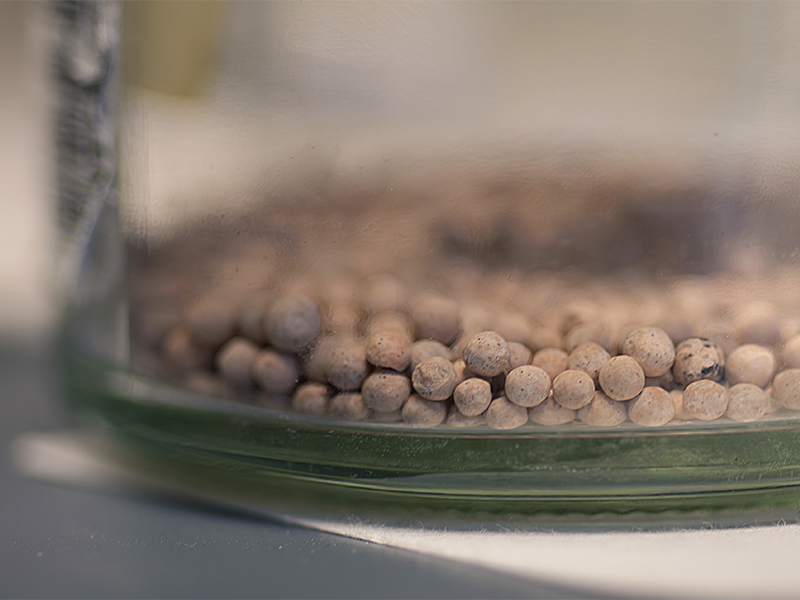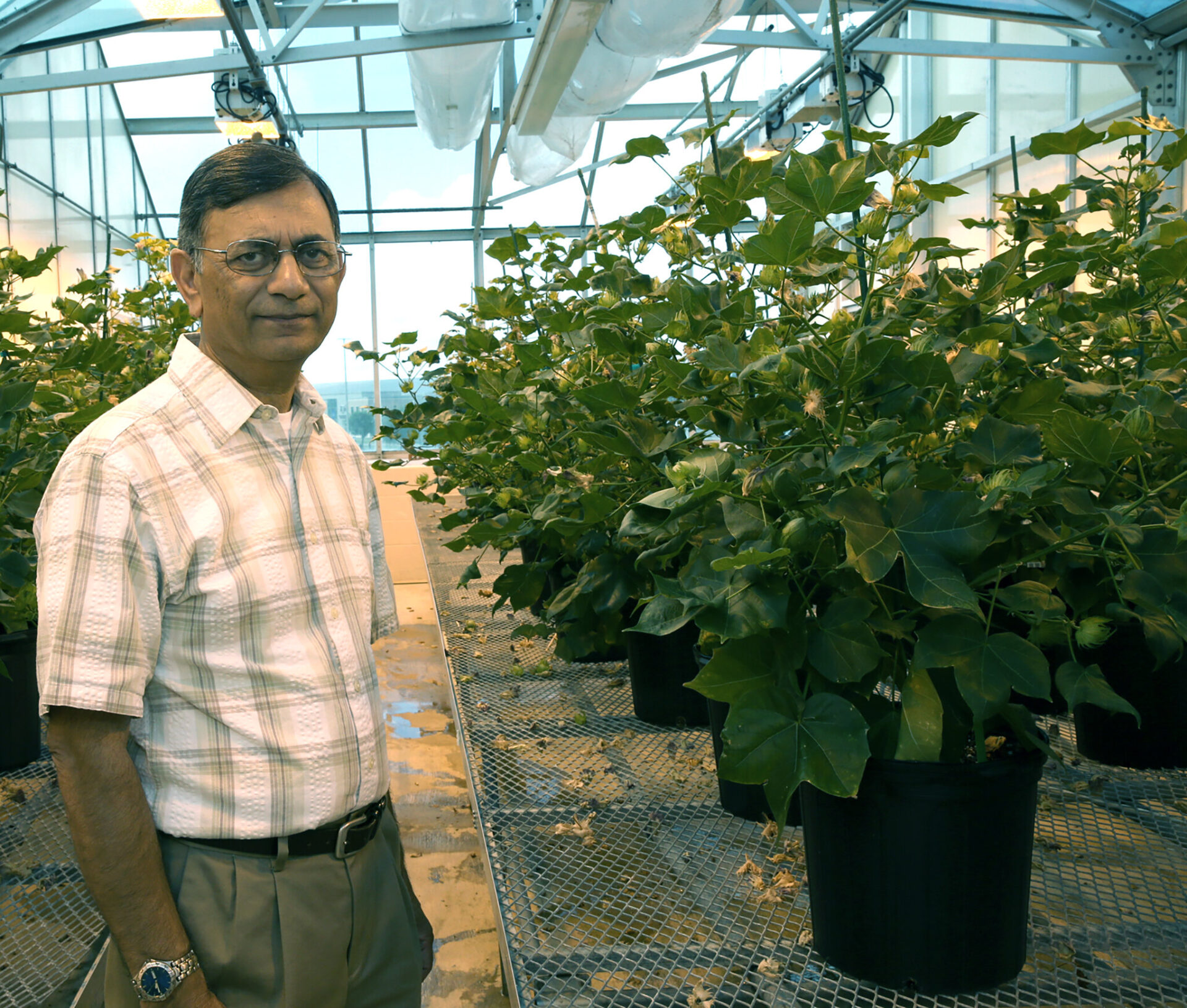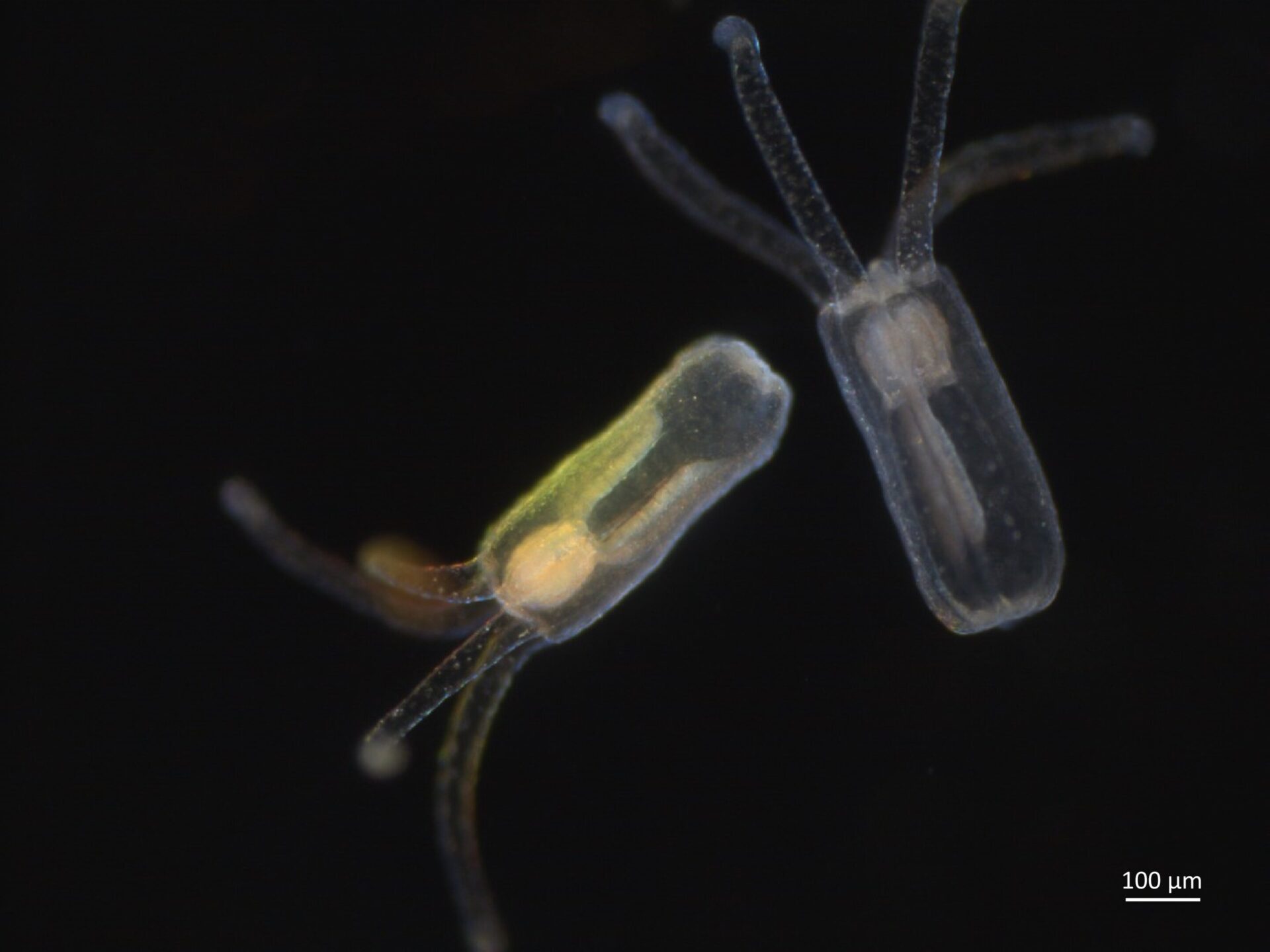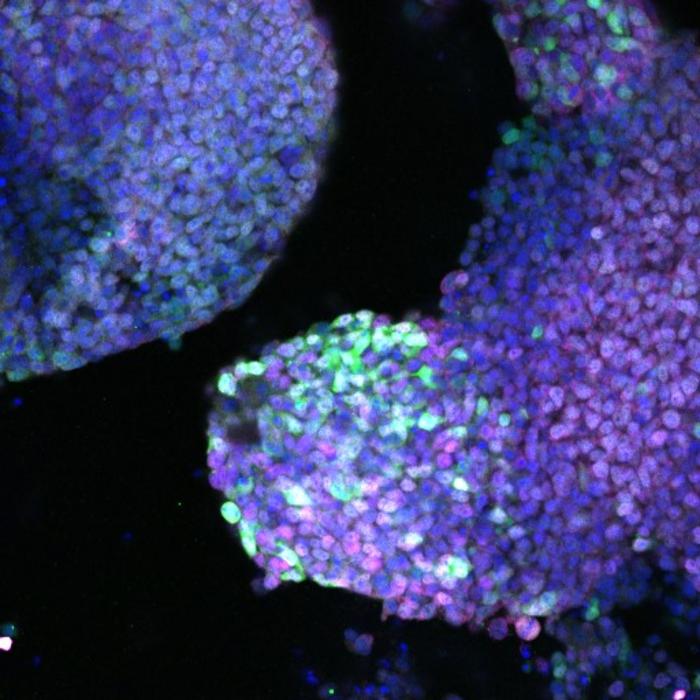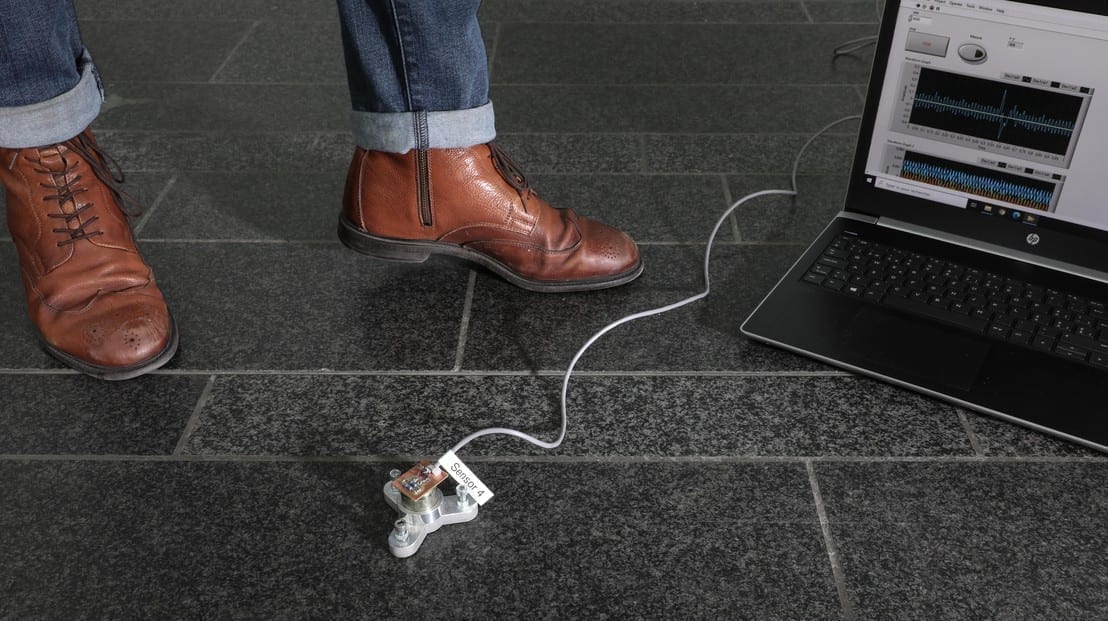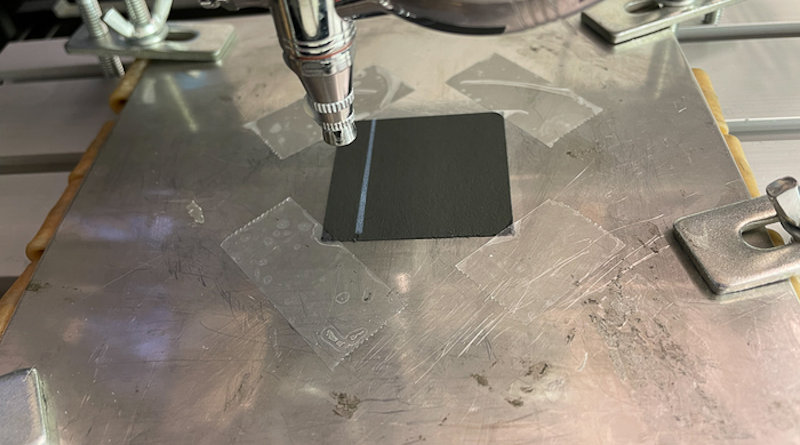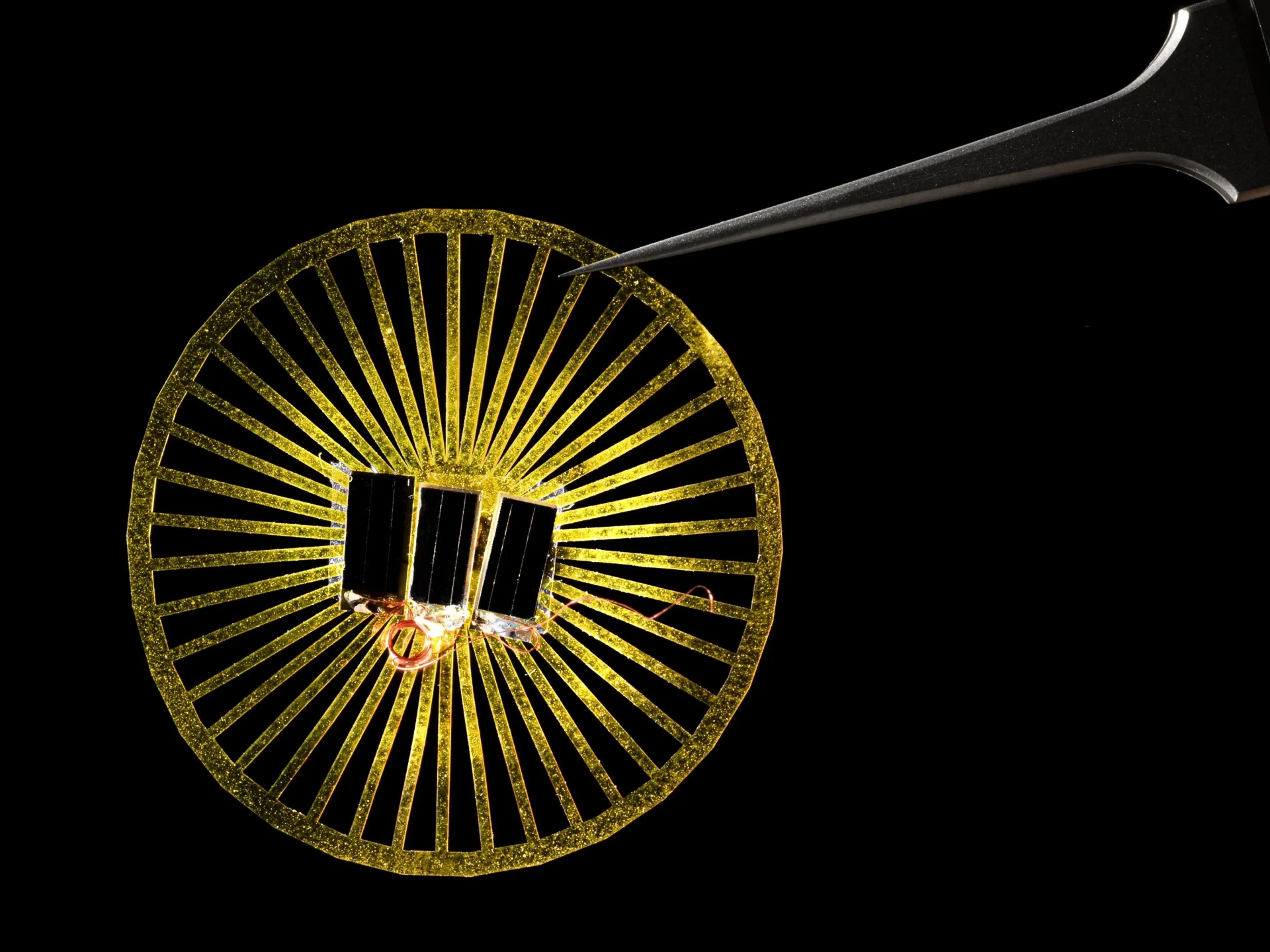
This battery-free device uses solar panels (black rectangles shown here) to power its onboard electronics.
Mark Stone/University of Washington
Wireless sensors can monitor how temperature, humidity or other environmental conditions vary across large swaths of land, such as farms or forests.
These tools could provide unique insights for a variety of applications, including digital agriculture and monitoring climate change. One problem, however, is that it is currently time-consuming and expensive to physically place hundreds of sensors across a large area.
Inspired by how dandelions use the wind to distribute their seeds, a University of Washington team has developed a tiny sensor-carrying device that can be blown by the wind as it tumbles toward the ground. This system is about 30 times as heavy as a 1 milligram dandelion seed but can still travel up to 100 meters in a moderate breeze, about the length of a football field, from where it was released by a drone. Once on the ground, the device, which can hold at least four sensors, uses solar panels to power its onboard electronics and can share sensor data up to 60 meters away.
The team published these results March 16 in Nature.
“We show that you can use off-the-shelf components to create tiny things. Our prototype suggests that you could use a drone to release thousands of these devices in a single drop. They’ll all be carried by the wind a little differently, and basically you can create a 1,000-device network with this one drop,” said senior author Shyam Gollakota, a UW professor in the Paul G. Allen School of Computer Science & Engineering. “This is amazing and transformational for the field of deploying sensors, because right now it could take months to manually deploy this many sensors.”
Because the devices have electronics on board, it’s challenging to make the whole system as light as an actual dandelion seed. The first step was to develop a shape that would allow the system to take its time falling to the ground so that it could be tossed around by a breeze. The researchers tested 75 designs to determine what would lead to the smallest “terminal velocity,” or the maximum speed a device would have as it fell through the air.
“The way dandelion seed structures work is that they have a central point and these little bristles sticking out to slow down their fall. We took a 2D projection of that to create the base design for our structures,” said lead author Vikram Iyer, a UW assistant professor in the Allen School. “As we added weight, our bristles started to bend inwards. We added a ring structure to make it more stiff and take up more area to help slow it down.”
To keep things light, the team used solar panels instead of a heavy battery to power the electronics. The devices landed with the solar panels facing upright 95% of the time. Their shape and structure allow them to flip over and fall in a consistently upright orientation similar to a dandelion seed.
Without a battery, however, the system can’t store a charge, which means that after the sun goes down, the sensors stop working. And then when the sun comes up the next morning, the system needs a bit of energy to get started.
“The challenge is that most chips will draw slightly more power for a short time when you first turn them on,” Iyer said. “They’ll check to make sure everything is working properly before they start executing the code that you wrote. This happens when you turn on your phone or your laptop, too, but of course they have a battery.”
The team designed the electronics to include a capacitor, a device that can store some charge overnight.
“Then we’ve got this little circuit that will measure how much energy we’ve stored up and, once the sun is up and there is more energy coming in, it will trigger the rest of the system to turn on because it senses that it’s above some threshold,” Iyer said.
These devices use backscatter, a method that involves sending information by reflecting transmitted signals, to wirelessly send sensor data back to the researchers. Devices carrying sensors — measuring temperature, humidity, pressure and light — sent data until sunset when they turned off. Data collection resumed when the devices turned themselves back on the next morning.
To measure how far the devices would travel in the wind, the researchers dropped them from different heights, either by hand or by drone on campus. One trick to spread out the devices from a single drop point, the researchers said, is to vary their shapes slightly so they are carried by the breeze differently.
“This is mimicking biology, where variation is actually a feature, rather than a bug,” said co-author Thomas Daniel, a UW professor of biology. “Plants can’t guarantee that where they grew up this year is going to be good next year, so they have some seeds that can travel farther away to hedge their bets.”
Another benefit of the battery-free system is that there’s nothing on this device that will run out of juice — the device will keep going until it physically breaks down. One drawback to this is that electronics will be scattered across the ecosystem of interest. The researchers are studying how to make these systems more biodegradable.
“This is just the first step, which is why it’s so exciting,” Iyer said. “There are so many other directions we can take now — such as developing larger-scale deployments, creating devices that can change shape as they fall, or even adding some more mobility so that the devices can move around once they are on the ground to get closer to an area we’re curious about.”
Original Article: Tiny battery-free devices float in the wind like dandelion seeds
More from: University of Washington
The Latest Updates from Bing News & Google News
Go deeper with Bing News on:
Wireless battery-free sensors
- The 8 Best Outdoor Security Cameras Keep An Eye Out Day and Night
The camera can record Full HD video with a 130-degree field of view and full-color, low-light night vision. In complete darkness, four infrared LEDs provide up to 25 feet of black-and-white night ...
- 10 Best Smart Home Devices of May 2024
Smart home devices can streamline everything from managing your home temperature to saving on energy bills. Here are Newsweek’s favorite smart home devices by function.
- Beats Solo 4 Review: Big Performance Upgrades, but Wait for a Sale
They mostly look the same as their predecessor, but the Beats Solo 4's sound quality, voice-calling performance, feature set and battery life are noticeably improved. But are they worth $200?
- Beats Solo 4 review: a slew of upgrades keep this fan favorite current
Beats takes its wildly popular Solo on-ear wireless headphones to the next level with spatial and lossless audio.
- Newest Beats earbuds are just $80, but there’s a catch
The newest Beats Solo Buds wireless earbuds are also the brand's most affordable yet. But did Beats get rid of too many features?
Go deeper with Google Headlines on:
Wireless battery-free sensors
[google_news title=”” keyword=”wireless battery-free sensors” num_posts=”5″ blurb_length=”0″ show_thumb=”left”]
Go deeper with Bing News on:
Biodegradable wireless sensors
- A magnetic liquid makes for an injectable sensor in living tissue
The researchers used their substance to make liquid bioelectronics that can be injected into the body and later retrieved. These devices seamlessly attach to biological tissue and convert ...
- Predicting the Next Big Thing: A Closer Look at the Top 7 Tech Trends of 2024
Are you ready to take a sneak peek into the future of technology? Get ready to dive into the top 10 tech trends of 2024 and discover what innovations are set to shake up the world as we know it. From ...
- Apple is exploring removable batteries for iOS devices – and I think AirPods need it most
Apple has filed a patent for an easy-to-replace battery standard for iPhones, tablets and keyboards – but AirPods aren't mentioned.
- STEM-T showcases SCSU research capabilities
South Carolina State University students recently presented innovative research projects that they have been diligently working on during the STEM-T Showcase.
- Go with the flow: Battery-free bladder sensor offers filling detection
Subsequently, it wirelessly sends concurrent data to a smartphone app, enabling users to track their bladder fullness in real-time. According to researchers, their device is the first instance of a ...
Go deeper with Google Headlines on:
Biodegradable wireless sensors
[google_news title=”” keyword=”biodegradable wireless sensors” num_posts=”5″ blurb_length=”0″ show_thumb=”left”]

